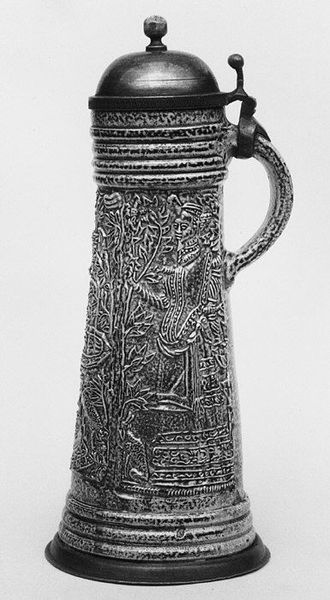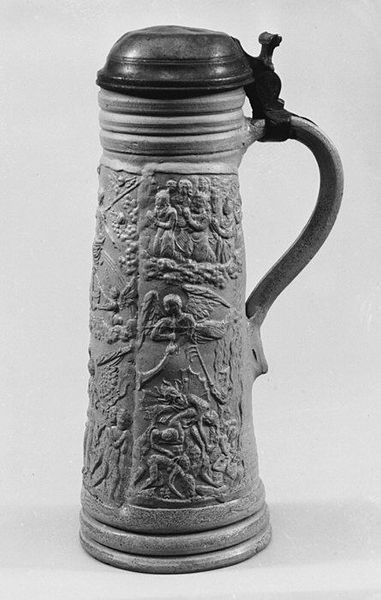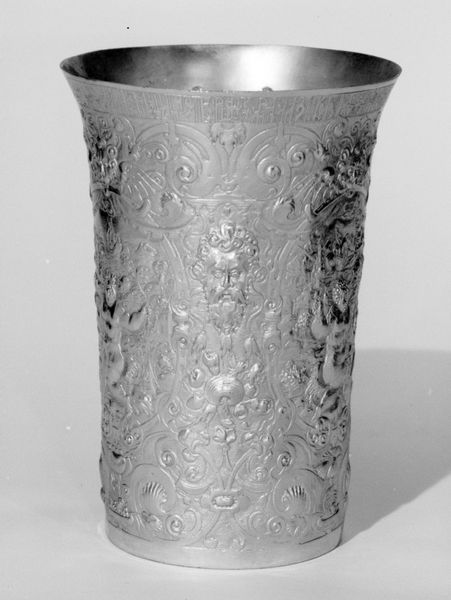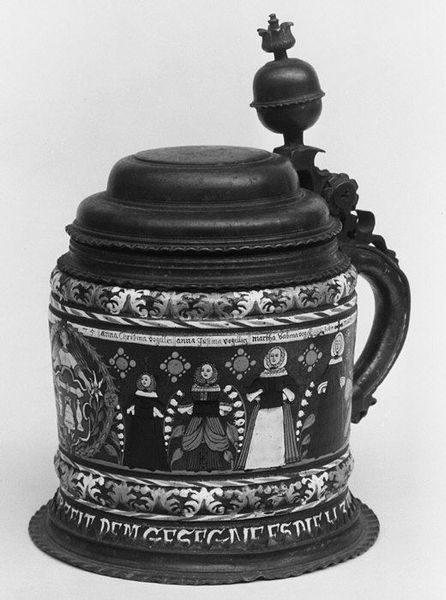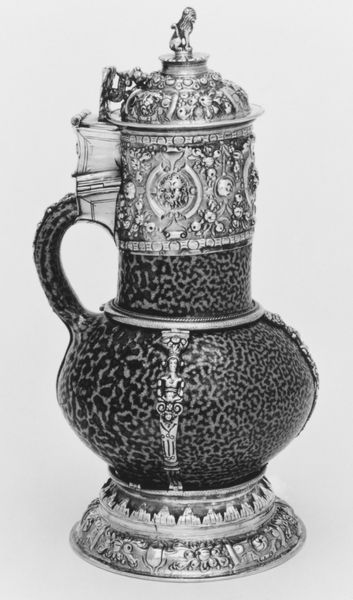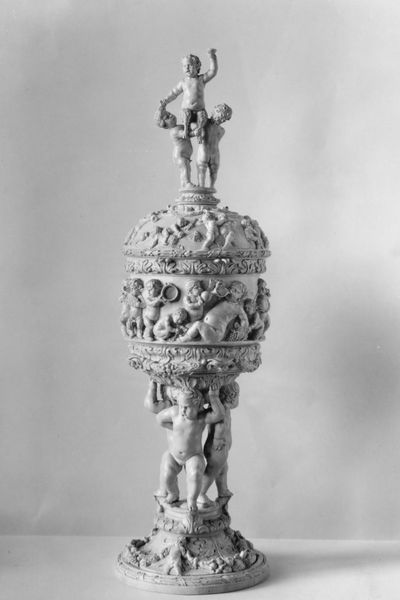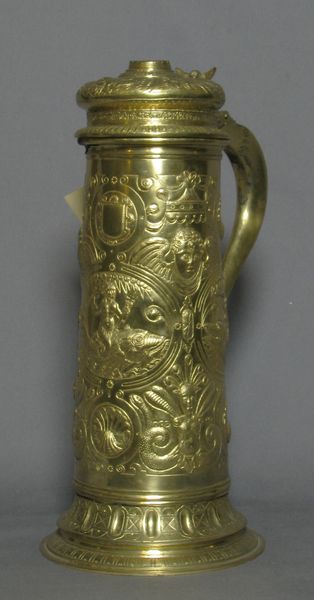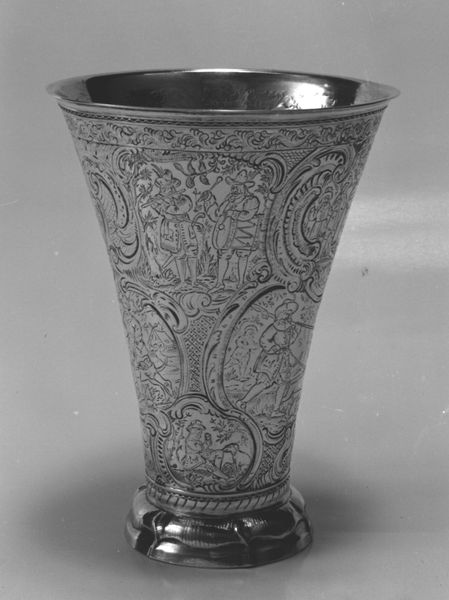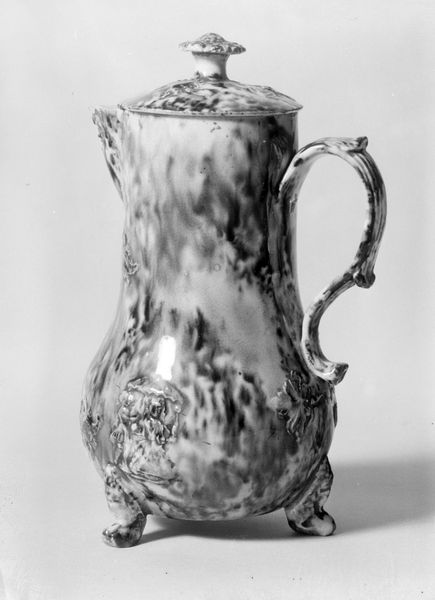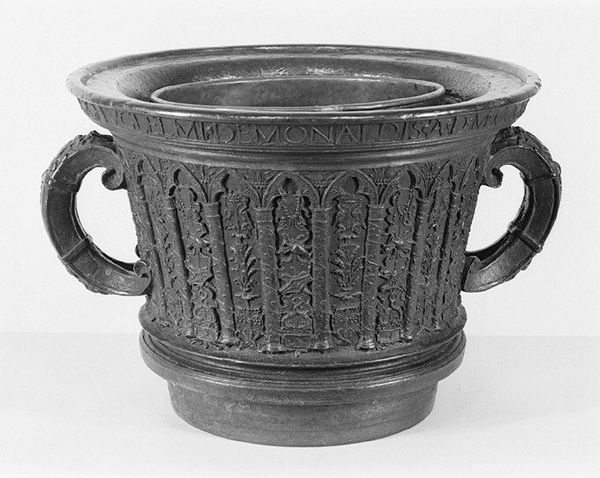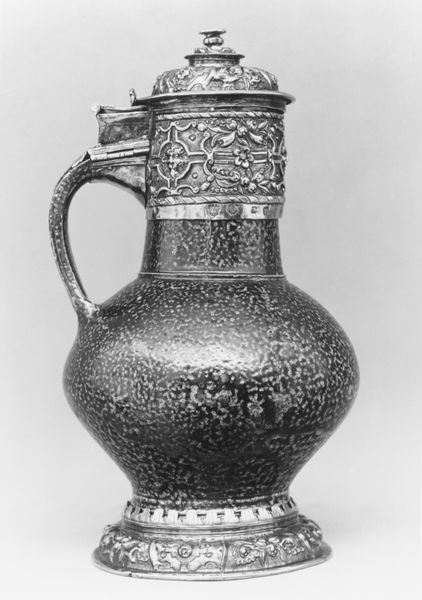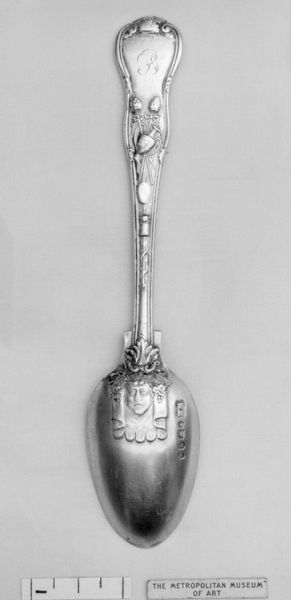
relief, ceramic, sculpture
#
medieval
#
sculpture
#
relief
#
ceramic
#
11_renaissance
#
sculpture
#
decorative-art
Dimensions: Height: 15 5/16 in. (38.9 cm)
Copyright: Public Domain
This Flagon, or Schnelle, was made in Germany by Hans Hilgers, sometime in the late 16th century. It’s made of salt-glazed stoneware, a very robust material, and finished with a pewter lid. The body of the flagon is decorated with heraldic devices, pressed into the clay while still damp. Notice how the maker has emphasized the plasticity of the clay, exploiting its capacity to take a deep impression. Potters in the Rhineland specialized in wares like this, stacking their kilns high with these vessels, which were relatively cheap to produce, but could be sold widely, even internationally. While we might think of stoneware as a humble material, consider the amount of work involved in digging the clay, preparing it, forming the flagon, firing it in the kiln, and finally transporting it to market. This flagon is not just an artwork, but an artifact of a complex system of labor and trade. It serves to remind us to consider the full social and economic context of objects like these, moving beyond conventional notions of art.
Comments
No comments
Be the first to comment and join the conversation on the ultimate creative platform.
